Industry Track Highlights
5G Section
Topic: 5G technology and standards
Chair: Amitabha Ghosh, Nokia
Pannelist:
Takehiro Nakamura, NTT DOCOMO
Antti Toskala, Nokia
Anthony C.K. Soong, Huawei
Abstract:
The first phase of 3GPP 5G New Radio (NR) Rel-15 standardization has been completed and the commercial deployment of 5G system is already underway both at sub 6GHz and mmWave band. In this session we will cover the 5G NR Rel-15 features and what component technologies will be covered in Rel-16 and Rel-17 of 3GPP NR. Further, we will also address the first hand 5GNR deployment experience from a major operator. The session will comprise of two to three keynote talks followed by a short panel session.
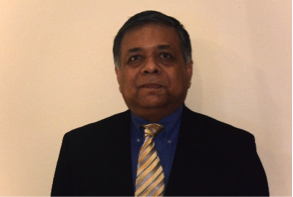 Amitabha (Amitava) Ghosh is a Nokia Fellow and Head, Radio Interface Group at Nokia Bell Labs. He joined Motorola in 1990 after receiving his Ph.D in Electrical Engineering from Southern Methodist University, Dallas. Since joining Motorola he worked on multiple wireless technologies starting from IS-95, cdma-2000, 1xEV-DV/1XTREME, 1xEV-DO, UMTS, HSPA, 802.16e/WiMAX and 3GPP LTE. He has 60 issued patents, has written multiple book chapters and has authored numerous external and internal technical papers. He is currently working on 3GPP LTE-Advanced and 5G technologies. His research interests are in the area of digital communications, signal processing and wireless communications. He is the recipient of 2016 IEEE Stephen O. Rice and 2017 Neal Shephard prize, member of IEEE Access editorial board and co-author of the book titled “Essentials of LTE and LTE-A”.
Amitabha (Amitava) Ghosh is a Nokia Fellow and Head, Radio Interface Group at Nokia Bell Labs. He joined Motorola in 1990 after receiving his Ph.D in Electrical Engineering from Southern Methodist University, Dallas. Since joining Motorola he worked on multiple wireless technologies starting from IS-95, cdma-2000, 1xEV-DV/1XTREME, 1xEV-DO, UMTS, HSPA, 802.16e/WiMAX and 3GPP LTE. He has 60 issued patents, has written multiple book chapters and has authored numerous external and internal technical papers. He is currently working on 3GPP LTE-Advanced and 5G technologies. His research interests are in the area of digital communications, signal processing and wireless communications. He is the recipient of 2016 IEEE Stephen O. Rice and 2017 Neal Shephard prize, member of IEEE Access editorial board and co-author of the book titled “Essentials of LTE and LTE-A”.
Topic: 5G baseband chip design issues
Chair: Alan Gatherer, Huawei
 Alan Gatherer is a Senior Technical Vice President at Huawei Technologies, USA and Fellow of the IEEE. He is responsible for R&D efforts in the US to develop next generation baseband chips and software for 4G and 5G base station modems. His group is developing new technologies for baseband SoC in the areas of dynamic multimode modems, interconnect and memory fabric, CPU/DSP clusters and virtualization, focusing on 5G deployment. Alan joined Huawei in January 2010. Prior to that he was a TI Fellow and CTO at Texas Instruments where he led the development of high performance, multicore DSP at TI and worked on various telecommunication standards. Alan has authored multiple journal and conference papers and is regularly asked to give keynote and plenary talks at communication equipment conferences. In addition, he holds over 70 awarded patents and is author of the book “The Application of Programmable DSPs in Mobile Communications.” Alan holds a bachelor of engineering in microprocessor engineering from Strathclyde University in Scotland. He also attended Stanford University where he received a master’s in electrical engineering in 1989 and his doctorate in electrical engineering in 1993.
Alan Gatherer is a Senior Technical Vice President at Huawei Technologies, USA and Fellow of the IEEE. He is responsible for R&D efforts in the US to develop next generation baseband chips and software for 4G and 5G base station modems. His group is developing new technologies for baseband SoC in the areas of dynamic multimode modems, interconnect and memory fabric, CPU/DSP clusters and virtualization, focusing on 5G deployment. Alan joined Huawei in January 2010. Prior to that he was a TI Fellow and CTO at Texas Instruments where he led the development of high performance, multicore DSP at TI and worked on various telecommunication standards. Alan has authored multiple journal and conference papers and is regularly asked to give keynote and plenary talks at communication equipment conferences. In addition, he holds over 70 awarded patents and is author of the book “The Application of Programmable DSPs in Mobile Communications.” Alan holds a bachelor of engineering in microprocessor engineering from Strathclyde University in Scotland. He also attended Stanford University where he received a master’s in electrical engineering in 1989 and his doctorate in electrical engineering in 1993.
Topic: 5G Spectrum
Chair: Wan Lei, Huawei
 Dr. Wan Lei, Huawei Fellow and Head of Wireless Standard and Patent Department in Huawei. She has led the LTE-Advanced and 5G-NR research and 3GPP RAN standardization work in Huawei since 2008. Her main focus areas are air-interface evolution and spectrum regulation. She is known as the expert on network topology, the system-level evaluation methodology and FDD/TDD convergence in the industry. She is the main driver of LTE TDD/FDD frame structure merging, CoMP, LTE-Hi (3GPP R12 small cell enhancement), U-LTE (LAA and MULTEFIRE), NB-IoT, LTE-V2X research and standardization. She is the inventor of the physical layer MI quality model that is widely used in the system level simulation for both 4G and 5G evaluation. She proposed LTE/NR spectrum sharing (a.c.a. LTE/NR coexistence), which one of the key features in 3GPP Rel-15 for 5G-NR.
Dr. Wan Lei, Huawei Fellow and Head of Wireless Standard and Patent Department in Huawei. She has led the LTE-Advanced and 5G-NR research and 3GPP RAN standardization work in Huawei since 2008. Her main focus areas are air-interface evolution and spectrum regulation. She is known as the expert on network topology, the system-level evaluation methodology and FDD/TDD convergence in the industry. She is the main driver of LTE TDD/FDD frame structure merging, CoMP, LTE-Hi (3GPP R12 small cell enhancement), U-LTE (LAA and MULTEFIRE), NB-IoT, LTE-V2X research and standardization. She is the inventor of the physical layer MI quality model that is widely used in the system level simulation for both 4G and 5G evaluation. She proposed LTE/NR spectrum sharing (a.c.a. LTE/NR coexistence), which one of the key features in 3GPP Rel-15 for 5G-NR.
Dr. Wan Lei has a long experience in the wireless communication industry, with deep background of 3G, 4G and 5G evolution. She is one of the main contributors of ITU-R 4G and 5G evaluation, as well as the proposer of 4.5G branding (LTE-Advanced-Pro). She is the main pusher of the global spectrum harmonization on 3.5GHz, 1.4GHz and APT700MHz, etc., and keeps driving the duplex evolution, including TDD and FDD convergence, FDD/TDD CA and flexible duplex.
Machine Learning Section
Title: An intelligent 5G network for a variety of services
Chair: Jin Yang, Verizon Communications
Abstract:
5G wireless network is evolving from a connectivity-based network to an intelligent service delivery platform. The 5G service-based network architecture, radio and core network virtualization allow more flexible network function placement and broad ecosystem. The 5G supports end-to-end network slicing and differentiated Quality of Services (QoS) from radio, transport to core and application server. An intelligent multiple-access edge network is needed to support massive Internet of Things, ultra-reliable and low-latency communications (URLLC) on top of enhanced mobile broadband (eMBB). Dynamic new radio access with sophistic beam management and further densified radio nodes increase the complexity of network operation beyond human–being can handle. Thus, artificial intelligent and machine learning are essential for autonomous network operations to enable a fully connected world with communications of everything.
The panelists will discuss 5G networks as a service, Machine Leaning for an autonomous self-organizing network and multi-access edge computing for various innovative services.
 Dr. Jin Yang is a Fellow at Verizon Communications Inc., responsible for wireless technology and strategy. She is leading next generation wireless network architecture and technologies, including 5G NR, Evolved LTE, Internet of Things (IoT), Multi-access Edge Computing, network virtualization, and Self-Organizing Network. She has played a key role in the development and commercialization of 5G NR in 2019, LTE networks in 2010 and various CDMA networks since 1995 at Verizon, Vodafone and AirTouch Communications.
Dr. Jin Yang is a Fellow at Verizon Communications Inc., responsible for wireless technology and strategy. She is leading next generation wireless network architecture and technologies, including 5G NR, Evolved LTE, Internet of Things (IoT), Multi-access Edge Computing, network virtualization, and Self-Organizing Network. She has played a key role in the development and commercialization of 5G NR in 2019, LTE networks in 2010 and various CDMA networks since 1995 at Verizon, Vodafone and AirTouch Communications.
Dr. Yang received the B.Sc. (Honors), and Ph.D. degrees from Tsinghua University. She has more than 50 granted patents and 20 pending patents on wireless communications. She has published numerous papers and co-authored 3 books on mobile communications.
Panel title: Artificial Intelligence Paradigms for Designing Wireless Systems
Chair: Haris Gacanin, Nokia
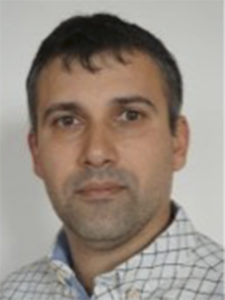 Haris Gačanin received his Dipl.-Ing. degree in Electrical engineering from the University of Sarajevo in 2000. In 2005 and 2008, respectively, he received MSc and PhD from Tohoku University in Japan. He was with Tohoku University from 2008 until 2010 first as Japan Society for Promotion of Science postdoctoral fellow and later, as Assistant Professor. In 2010, he joined Alcatel-Lucent (now Nokia), where he is currently Department Head at Nokia Bell Labs. He is adjunct professor at University of Leuven (KU Leuven). His professional interests are related to applications of artificial intelligence with machine learning in autonomous wireless networks. He has 200+ scientific publications (journals, conferences and patent applications) and invited/tutorial talks. He is senior member of the Institute of Electrical and Electronics Engineers (IEEE) and the Institute of Electronics, Information and Communication Engineering (IEICE). He is a recipient of IEICE Communication System Study Group Best Paper Award (joint 2014, 2015, 2017), The 2013 Alcatel-Lucent Award of Excellence, the 2012 KDDI Foundation Research Award, the 2009 KDDI Foundation Research Grant Award, the 2008 Japan Society for Promotion of Science (JSPS) Postdoctoral Fellowships for Foreign Researchers, the 2005 Active Research Award in Radio Communications, 2005 Vehicular Technology Conference (VTC 2005-Fall) Student Paper Award from IEEE VTS Japan Chapter and the 2004 Institute of IEICE Society Young Researcher Award. He was awarded by Japanese Government (MEXT) Research Scholarship in 2002.
Haris Gačanin received his Dipl.-Ing. degree in Electrical engineering from the University of Sarajevo in 2000. In 2005 and 2008, respectively, he received MSc and PhD from Tohoku University in Japan. He was with Tohoku University from 2008 until 2010 first as Japan Society for Promotion of Science postdoctoral fellow and later, as Assistant Professor. In 2010, he joined Alcatel-Lucent (now Nokia), where he is currently Department Head at Nokia Bell Labs. He is adjunct professor at University of Leuven (KU Leuven). His professional interests are related to applications of artificial intelligence with machine learning in autonomous wireless networks. He has 200+ scientific publications (journals, conferences and patent applications) and invited/tutorial talks. He is senior member of the Institute of Electrical and Electronics Engineers (IEEE) and the Institute of Electronics, Information and Communication Engineering (IEICE). He is a recipient of IEICE Communication System Study Group Best Paper Award (joint 2014, 2015, 2017), The 2013 Alcatel-Lucent Award of Excellence, the 2012 KDDI Foundation Research Award, the 2009 KDDI Foundation Research Grant Award, the 2008 Japan Society for Promotion of Science (JSPS) Postdoctoral Fellowships for Foreign Researchers, the 2005 Active Research Award in Radio Communications, 2005 Vehicular Technology Conference (VTC 2005-Fall) Student Paper Award from IEEE VTS Japan Chapter and the 2004 Institute of IEICE Society Young Researcher Award. He was awarded by Japanese Government (MEXT) Research Scholarship in 2002.
Panelist: Peying Zhu, Huawei
 Dr. Peiying Zhu is an IEEE Fellow and Huawei Fellow. She is currently leading 5G wireless system research in Huawei. The focus of her research is advanced wireless access technologies with more than 200 granted patents. She has been regularly giving talks and panel discussions on 5G vision and enabling technologies. She served as the guest editor for IEEE Signal processing magazine special issue on the 5G revolution and IEEE JSAC on Deployment Issues and Performance Challenges for 5G. She co-chaired various 5G workshops in IEEE GLOBECOM. She is actively involved in 3GPP and IEEE 802 standards development. She is currently a WiFi Alliance Board member. Prior to joining Huawei in 2009, Peiying was a Nortel Fellow and Director of Advanced Wireless Access Technology in the Nortel Wireless Technology Lab. She led the team and pioneered research and prototyping on MIMO-OFDM and Multi-hop relay. Many of these technologies developed by the team have been adopted into LTE standards and 4G products. Peiying Zhu received the Master of Science degree and Doctor Degree from Southeast University and Concordia University in 1985 and 1993 respectively.
Dr. Peiying Zhu is an IEEE Fellow and Huawei Fellow. She is currently leading 5G wireless system research in Huawei. The focus of her research is advanced wireless access technologies with more than 200 granted patents. She has been regularly giving talks and panel discussions on 5G vision and enabling technologies. She served as the guest editor for IEEE Signal processing magazine special issue on the 5G revolution and IEEE JSAC on Deployment Issues and Performance Challenges for 5G. She co-chaired various 5G workshops in IEEE GLOBECOM. She is actively involved in 3GPP and IEEE 802 standards development. She is currently a WiFi Alliance Board member. Prior to joining Huawei in 2009, Peiying was a Nortel Fellow and Director of Advanced Wireless Access Technology in the Nortel Wireless Technology Lab. She led the team and pioneered research and prototyping on MIMO-OFDM and Multi-hop relay. Many of these technologies developed by the team have been adopted into LTE standards and 4G products. Peiying Zhu received the Master of Science degree and Doctor Degree from Southeast University and Concordia University in 1985 and 1993 respectively.
Panelist: Nageen Himayat, Intel
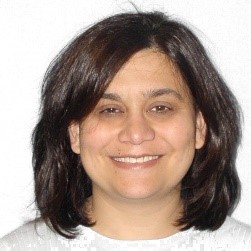 Nageen Himayat is a Principal Engineer with Intel, where she conducts research on next generation (5G/5G+) of mobile broadband systems, and applications of machine learning for wireless. She has authored over 250 technical publications (peer-reviewed publications, 3GPP/IEEE standards contributions and patent filings), with contributions on multi-radio heterogeneous networks, mm-wave communication, cross layer design, and non-linear signal processing techniques. Prior to Intel, Nageen was with Lucent Technologies and General Instrument, where she developed systems for both wireline and wireless networks. Nageen received her BSEE degree from Rice University, MBA from University of California, Berkeley, and Ph.D. from the University of Pennsylvania.
Nageen Himayat is a Principal Engineer with Intel, where she conducts research on next generation (5G/5G+) of mobile broadband systems, and applications of machine learning for wireless. She has authored over 250 technical publications (peer-reviewed publications, 3GPP/IEEE standards contributions and patent filings), with contributions on multi-radio heterogeneous networks, mm-wave communication, cross layer design, and non-linear signal processing techniques. Prior to Intel, Nageen was with Lucent Technologies and General Instrument, where she developed systems for both wireline and wireless networks. Nageen received her BSEE degree from Rice University, MBA from University of California, Berkeley, and Ph.D. from the University of Pennsylvania.
Panelist: Klaus Doppler, Nokia
 Klaus Doppler is heading the Indoor Networks Research group in Nokia Bell Labs. His research focus is on enabling ubiquitous Gigabit connectivity and on developing technologies for smart buildings, enterprises and factories. In the past, he has been responsible for the wireless research and standardization in Nokia Technologies, incubated a new business line and pioneered research on Device-to-Device Communications underlaying LTE networks. Klaus received several inventor awards in Nokia for 100+ pending and granted patent applications. He has published 40+ scientific publications, received his PhD. from Aalto University, Finland in 2010 and his MSc. from Graz University of Technology, Austria in 2003.
Klaus Doppler is heading the Indoor Networks Research group in Nokia Bell Labs. His research focus is on enabling ubiquitous Gigabit connectivity and on developing technologies for smart buildings, enterprises and factories. In the past, he has been responsible for the wireless research and standardization in Nokia Technologies, incubated a new business line and pioneered research on Device-to-Device Communications underlaying LTE networks. Klaus received several inventor awards in Nokia for 100+ pending and granted patent applications. He has published 40+ scientific publications, received his PhD. from Aalto University, Finland in 2010 and his MSc. from Graz University of Technology, Austria in 2003.
Topic: AI for Autonomous Driving Networks
Chair: Jin Yang, Huawei
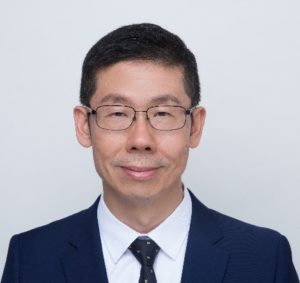 Jin Yang is the Chief Scientist and Senior Director for Applied ML Research for Communication Systems and Services. He is currently leading a research group exploring and applying machine learning and AI technologies for wireless network operation, optimization and design, including network performance and user experience monitoring, anomaly detection, root cause analysis, network optimization and resource management. He is also in charge of some company wide initiatives for AI enabled future networks.
Jin Yang is the Chief Scientist and Senior Director for Applied ML Research for Communication Systems and Services. He is currently leading a research group exploring and applying machine learning and AI technologies for wireless network operation, optimization and design, including network performance and user experience monitoring, anomaly detection, root cause analysis, network optimization and resource management. He is also in charge of some company wide initiatives for AI enabled future networks.
Jin Yang spent most of his time in the last 20 years in telecommunication industry (Lucent and Motorola), after receiving his PhD degree at Imperial College, London, and BSc and MSc degrees from Tsinghua University, Beijing.
5G for Verticals Section
Topic AI for Autonomous Vehicles
Chair: Gaurav Bansal
 Gaurav Bansal is a Principal Engineer at the Airbus A3 Labs where he is currently leading initiatives in Artificial Intelligence to enable self-piloted aircraft operation and flying autonomous vehicles. Previously, Gaurav worked as a Principal Researcher at the Toyota InfoTechnology Center in Mountain View, CA, where he led several research efforts on the design of communication systems for Automated Driving. Gaurav is an expert in Vehicular Communications, pioneering contributions in Dedicated Short Range Communications (DSRC) congestion control and in innovative use-cases to leverage connectivity in vehicles. His research interests also include millimeter wave & full-duplex wireless communications. Gaurav represented Toyota in the Automakers’ Vehicle Safety Communication Consortium and in the SAE, ETSI standardization bodies. Gaurav’s paper on DSRC Congestion Control received the Best Paper Award at the IEEE WiVEC Symposium. He also holds several patents in the field. Gaurav serves on the editorial board of IEEE Vehicular Technology Magazine and IEEE Connected Vehicles Initiative. Gaurav holds Electrical Engineering degrees from Indian Institute of Technology, Kanpur and The University of British Columbia.
Gaurav Bansal is a Principal Engineer at the Airbus A3 Labs where he is currently leading initiatives in Artificial Intelligence to enable self-piloted aircraft operation and flying autonomous vehicles. Previously, Gaurav worked as a Principal Researcher at the Toyota InfoTechnology Center in Mountain View, CA, where he led several research efforts on the design of communication systems for Automated Driving. Gaurav is an expert in Vehicular Communications, pioneering contributions in Dedicated Short Range Communications (DSRC) congestion control and in innovative use-cases to leverage connectivity in vehicles. His research interests also include millimeter wave & full-duplex wireless communications. Gaurav represented Toyota in the Automakers’ Vehicle Safety Communication Consortium and in the SAE, ETSI standardization bodies. Gaurav’s paper on DSRC Congestion Control received the Best Paper Award at the IEEE WiVEC Symposium. He also holds several patents in the field. Gaurav serves on the editorial board of IEEE Vehicular Technology Magazine and IEEE Connected Vehicles Initiative. Gaurav holds Electrical Engineering degrees from Indian Institute of Technology, Kanpur and The University of British Columbia.
Session Overview: Artificial Intelligence plays a key role in design of autonomous vehicles. State-of-the-art techniques in deep learning are used to process sensor data (cameras, radars, lidars) for various stages in autonomous vehicles stack (perception, mapping, path-planning etc.). We will cover advantages and challenges of deploying AI solutions for autonomous vehicles. We will also discuss how cooperative data from neighboring vehicles, infrastructure and cloud could be used to make robust AI solutions for autonomous vehicles.
Topic: 5G for unmanned aerial vehicles (UAV) and non-terrestrial networks (NTN)
Chair: Siva Subramani, Futurewei Technologies
Abstract: Technologies to provide cellular connectivity from High Altitude Platforms (HAPS) and Satellites are gaining momentum. Especially, with significant reduction in cost of satellite launch, entry of big players like Amazon, Google, Facebook etc. to provide connectivity from higher altitude are all very promising. However, the technical challenges, spectrum regulatory and ecosystem-related issues to take the aerial connectivity services to commercial level remain. Ongoing 3GPP study item on Non-terrestrial Networks explore the possibilities of 5G networks to support cellular connectivity from aerial platforms. In this panel session, we will look at the opportunities and technical challenges for the non-terrestrial connectivity. Providing cellular connectivity to drone as a terminal will also be briefly discussed.
 Siva Subramani is a Senior Standards Expert with Futurewei Technologies. He is actively involved in 3GPP RAN standardization, particularly on 5G physical layer developments, LTE / LTE-A enhancements and features. He was with Vodafone Group as a Standards Strategy Manager with responsibility for Radio Access Network (RAN) standardization in 3GPP and developing features related to vertical industry. He was the rapporteur of NB-IoT and instrumental for NB-IoT technology delivery from innovation to commercialization. He also contributed to design scoping of cellular vehicular communication (V2V and V2X) in LTE and NR. He is a Senior Member of IEEE. He holds a Ph.D. in Electrical and Electronics Engineering from the University of Bristol, UK.
Siva Subramani is a Senior Standards Expert with Futurewei Technologies. He is actively involved in 3GPP RAN standardization, particularly on 5G physical layer developments, LTE / LTE-A enhancements and features. He was with Vodafone Group as a Standards Strategy Manager with responsibility for Radio Access Network (RAN) standardization in 3GPP and developing features related to vertical industry. He was the rapporteur of NB-IoT and instrumental for NB-IoT technology delivery from innovation to commercialization. He also contributed to design scoping of cellular vehicular communication (V2V and V2X) in LTE and NR. He is a Senior Member of IEEE. He holds a Ph.D. in Electrical and Electronics Engineering from the University of Bristol, UK.
Panel: “Opportunities and Challenges in Drones, HAPS and Non-terrestrial Networks”
Panelists:
Nicolas Chuberre, Thales Alenia
Xingqin Lin, Ericsson
Shengli Fu, University of North Texas
Ravi Pragada, Interdigital
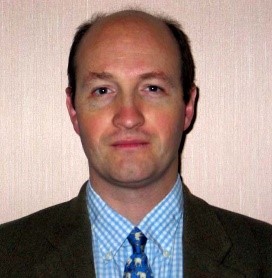 Nicolas Chuberre graduated from “Ecole Supérieure d’Ingénieur en Electronique et Electrotechnique” in Paris in 1988. Previously with Nokia & Alcatel Mobile phones to design signal processing algorithms, Medium Access Control protocols and integration test tools for 2G cellular handsets & systems, he joined Thales Alenia Space to manage the development of satellite payload equipment and the design of advanced Satellite Communication Systems (Geo stationary and constellation). Currently he is managing a project developing a Satellite Solution for 5G. He has successfully initiated and led several European projects in F6, FP7 and H2020 context. He has been chairing the SatCom Working Group of ISI and Networld2020 technology platforms (https://www.networld2020.eu/) during 9 years and as such was member of the partnership board of the 5G Infrastructure Association (http://5g-ppp.eu/). Nicolas has published several papers on innovative Satellite System concepts. Since 2006, he chairs Satellite Communication and Navigation working group at ETSI (www.etsi.org). He is the lead representative of Thales in 3GPP TSG RAN where he leads the standardisation effort on satellite in 5G.
Nicolas Chuberre graduated from “Ecole Supérieure d’Ingénieur en Electronique et Electrotechnique” in Paris in 1988. Previously with Nokia & Alcatel Mobile phones to design signal processing algorithms, Medium Access Control protocols and integration test tools for 2G cellular handsets & systems, he joined Thales Alenia Space to manage the development of satellite payload equipment and the design of advanced Satellite Communication Systems (Geo stationary and constellation). Currently he is managing a project developing a Satellite Solution for 5G. He has successfully initiated and led several European projects in F6, FP7 and H2020 context. He has been chairing the SatCom Working Group of ISI and Networld2020 technology platforms (https://www.networld2020.eu/) during 9 years and as such was member of the partnership board of the 5G Infrastructure Association (http://5g-ppp.eu/). Nicolas has published several papers on innovative Satellite System concepts. Since 2006, he chairs Satellite Communication and Navigation working group at ETSI (www.etsi.org). He is the lead representative of Thales in 3GPP TSG RAN where he leads the standardisation effort on satellite in 5G.
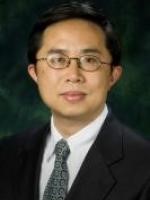 Shengli Fu received the B.S. and M.S. degrees in telecommunication engineering from the Beijing University of Posts and Telecommunications, Beijing, China, in 1994 and 1997, respectively, the M.S. degree in computer engineering from Wright State University, Dayton, OH, USA, in 2002, and the Ph.D. degree in electrical engineering from the University of Delaware, Newark, DE, USA, in 2005. He is currently a Professor and the Chair of the Department of Electrical Engineering, University of North Texas, Denton, TX, USA. His research interests include coding and information theory, wireless communications and sensor networks, and aerial networks.
Shengli Fu received the B.S. and M.S. degrees in telecommunication engineering from the Beijing University of Posts and Telecommunications, Beijing, China, in 1994 and 1997, respectively, the M.S. degree in computer engineering from Wright State University, Dayton, OH, USA, in 2002, and the Ph.D. degree in electrical engineering from the University of Delaware, Newark, DE, USA, in 2005. He is currently a Professor and the Chair of the Department of Electrical Engineering, University of North Texas, Denton, TX, USA. His research interests include coding and information theory, wireless communications and sensor networks, and aerial networks.
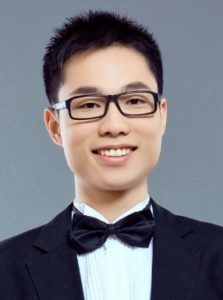 Xingqin Lin is a Senior Researcher, a Standards Delegate, and a Tech Talent at Ericsson. He leads 4G/5G research and standardization in the areas of drones and satellites. He is a highly experienced telecom professional with expert knowledge in wireless communications and technology strategy. He is a frequent speaker, panelist, and technical contributor at numerous conferences and workshops. He is a key contributor to 5G NR, NB-IoT, and LTE-M standards specifications. His pioneering work on cellular connected drones helped establish the 3GPP Rel-15 work on enhanced LTE support for aerial vehicles. He served as an editor of the IEEE COMMUNICATIONS LETTERS from 2015-2018. He holds a Ph.D. in electrical and computer engineering from The University of Texas at Austin, USA.
Xingqin Lin is a Senior Researcher, a Standards Delegate, and a Tech Talent at Ericsson. He leads 4G/5G research and standardization in the areas of drones and satellites. He is a highly experienced telecom professional with expert knowledge in wireless communications and technology strategy. He is a frequent speaker, panelist, and technical contributor at numerous conferences and workshops. He is a key contributor to 5G NR, NB-IoT, and LTE-M standards specifications. His pioneering work on cellular connected drones helped establish the 3GPP Rel-15 work on enhanced LTE support for aerial vehicles. He served as an editor of the IEEE COMMUNICATIONS LETTERS from 2015-2018. He holds a Ph.D. in electrical and computer engineering from The University of Texas at Austin, USA.
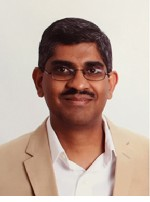 Ravi Pragada is a Principal Engineer at InterDigital Labs where he is currently research related to unmanned systems and related technologies. He has actively contributed to and held leadership positions in various next generation cellular system projects viz., millimeter wave air-interface design and development, device-to-device communications, millimeter wave backhaul and beyond 4G architectures. He also held engineering positions in product development including lead software architect for HSPA/UMTS and LTE protocol stack development projects covering handset and infrastructure products. He is a recipient of numerous innovation awards and Lucy Mahjobian distinguished publication award. Prior to InterDigital he has part of Motorola team (Arlington Heights, IL) that has developed RNC and NodeB infrastructure for 3GPP UMTS system. He received his M.S. in computer science and engineering from the State University of New York at Buffalo (1999) and B.E. from Andhra University, India.
Ravi Pragada is a Principal Engineer at InterDigital Labs where he is currently research related to unmanned systems and related technologies. He has actively contributed to and held leadership positions in various next generation cellular system projects viz., millimeter wave air-interface design and development, device-to-device communications, millimeter wave backhaul and beyond 4G architectures. He also held engineering positions in product development including lead software architect for HSPA/UMTS and LTE protocol stack development projects covering handset and infrastructure products. He is a recipient of numerous innovation awards and Lucy Mahjobian distinguished publication award. Prior to InterDigital he has part of Motorola team (Arlington Heights, IL) that has developed RNC and NodeB infrastructure for 3GPP UMTS system. He received his M.S. in computer science and engineering from the State University of New York at Buffalo (1999) and B.E. from Andhra University, India.
Topic: Smart Home and Enterprise Network
Chair: Rath Vannithamby, Intel
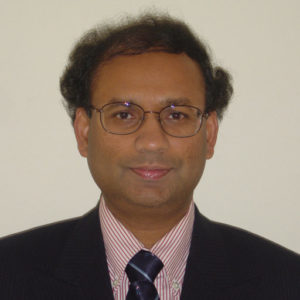 Rath Vannithamby received his BS, MS, and PhD degrees in EE from the University of Toronto, Canada. He is a senior research scientist in Intel Labs, USA responsible for 5G research. He is a recipient of Top Inventor award at Intel in 2015. Previously, he was a researcher at Ericsson, USA. He is a Senior Member of IEEE. He is an IEEE Communications Society Distinguished Lecturer for 2014-2017. He has published over 50 journal/conference papers, and has over 200 patents granted/pending. He is an editor of a couple of books: (i) “Towards 5G: Applications, Requirements and Candidate Technologies” by Wiley and (ii) “Design and Deployment of Small Cell Networks” by Cambridge Press. He has also authored chapters of 3 books on 4G. He has given keynote speeches in IEEE GC’10 BWA workshop, IEEE APWiMob’14, IEEE IAICT’14, IEEE ISTT’14, IEEE ICIIS’15, ANDICOM’16 and WIoT’17. Dr. Vannithamby has been an associate editor for Journal of IEEE Communications Surveys and Tutorials since 2012, and he was an editor for IEEE Internet of Things Journal in the past. He was the lead-chair for workshops on (i) “5G Technologies” and (ii) “M2M Communications for IoT” in IEEE ICC 2014; and co-chair for “5G HetNets” workshop in GC’16, and “Main Trends in 5G Networks” workshop in ICC’17. He has given tutorials and hosted panels on 3G/4G/5G topics in numerous venues in IEEE conferences. He was a Guest Editor for EURASIP JWCN SI on RRM for 3G+ Systems. He was a TPC symposium co-chair for PIMRC’11. He is a member and the Standards Liaison for IEEE ComSoc Signal Processing and Communications Electronics Technical Committee (SPCE-TC). He has also served on TPC for IEEE ICC, GC, VTC, WCNC, and PIMRC. His research interests are in the area of 5G RAN, 5G IoT, ultra-dense networking, Autonomous Driving, and ICN.
Rath Vannithamby received his BS, MS, and PhD degrees in EE from the University of Toronto, Canada. He is a senior research scientist in Intel Labs, USA responsible for 5G research. He is a recipient of Top Inventor award at Intel in 2015. Previously, he was a researcher at Ericsson, USA. He is a Senior Member of IEEE. He is an IEEE Communications Society Distinguished Lecturer for 2014-2017. He has published over 50 journal/conference papers, and has over 200 patents granted/pending. He is an editor of a couple of books: (i) “Towards 5G: Applications, Requirements and Candidate Technologies” by Wiley and (ii) “Design and Deployment of Small Cell Networks” by Cambridge Press. He has also authored chapters of 3 books on 4G. He has given keynote speeches in IEEE GC’10 BWA workshop, IEEE APWiMob’14, IEEE IAICT’14, IEEE ISTT’14, IEEE ICIIS’15, ANDICOM’16 and WIoT’17. Dr. Vannithamby has been an associate editor for Journal of IEEE Communications Surveys and Tutorials since 2012, and he was an editor for IEEE Internet of Things Journal in the past. He was the lead-chair for workshops on (i) “5G Technologies” and (ii) “M2M Communications for IoT” in IEEE ICC 2014; and co-chair for “5G HetNets” workshop in GC’16, and “Main Trends in 5G Networks” workshop in ICC’17. He has given tutorials and hosted panels on 3G/4G/5G topics in numerous venues in IEEE conferences. He was a Guest Editor for EURASIP JWCN SI on RRM for 3G+ Systems. He was a TPC symposium co-chair for PIMRC’11. He is a member and the Standards Liaison for IEEE ComSoc Signal Processing and Communications Electronics Technical Committee (SPCE-TC). He has also served on TPC for IEEE ICC, GC, VTC, WCNC, and PIMRC. His research interests are in the area of 5G RAN, 5G IoT, ultra-dense networking, Autonomous Driving, and ICN.
